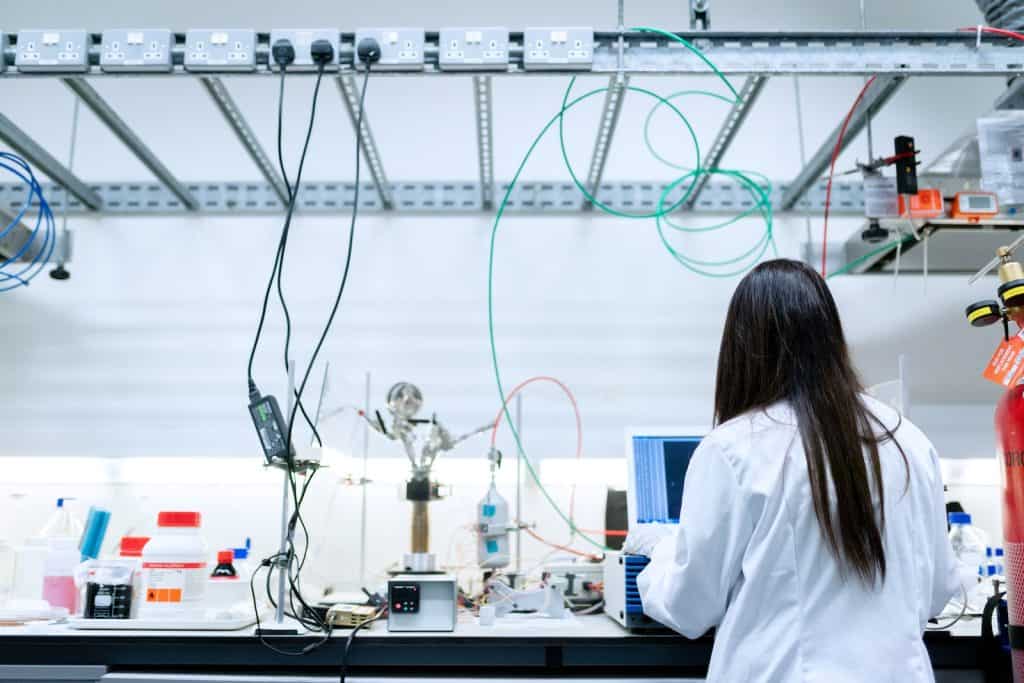You often hear about digitization trends in business, but hardly in the labs. However, that is gradually changing as lab businesses embrace digitization. While it doesn’t receive much media attention, lab digitization is steadily taking shape, and its impact is expected to be huge. This guide will enlighten you on lab digitization and its emerging trends.
Table of Contents
ToggleWhat Is the Digitalization of Laboratories?
Digitization of labs is the application of Industry 4.0 in the science sector. Like many industries have moved away from paper-based, analog processes, labs are also shifting toward automation. Manual ways of operating a laboratory are prone to error, so going digital prevents such setbacks and ensures more accuracy. Lab digitization makes things easier and streamlines most lab operations. Digitization in laboratories takes many forms, just like in other sectors like production.
For instance, lab digitization could involve using ELN software to record findings on a computer instead of writing them down. It can also be as advanced as using artificial intelligence to analyze and process big data and reveal details that human eyes may have missed. Lab digitization has many benefits, as you will find out later in the guide.
5 Trends for Lab Digitization in 2022
While lab digitization isn’t new, some of its trends are fairly fresh. Here are some of the lab digitization trends in 2022.
- AI and Machine Learning
There has been a significant explosion of data over the last decade, necessitating the advancement of artificial intelligence & machine learning. There has also been a concomitant increase in computer technology. Once your workflows and data are optimized and automated, you can use advanced analytics to drive actionable insights. This is vital because it helps you make data-informed and intelligent business decisions.
- Data Integration and Management
As more lab businesses move towards digitization, there is a need for data integration and management. Businesses must organize data and establish communication between data sources. Given the disparity and high volume of data to integrate and manage, strategies and standards are not only essential but crucial. Choosing and implementing these standards will begin to settle and become less complex. Labs can use them as they begin to build a Digitization Business Platform (DBP). The approach is an ecosystem of specialized modules instead of one monolithic software that takes over all operations.
- Cloud Storage & Computing
Researchers and the industry at large are now relying more on ELNs and LIMS to save time. Thanks to cloud-based LIMS, all these processes are automated and don’t need manual input. A provider hosts the system externally, making lab operations easier. There is no need to employ tech staff, no upfront costs, and the regulatory and security features are built to standard. Therefore, cloud storage and computing are the key pillars of digitization.
- Augmented Reality & the Virtual Lab
Virtual reality has been slowly finding its way into the lab, with several promising projects in place. For example, labs are using VR headsets to conduct colonization analysis and navigate microscopy data. Augmented reality is also on the rise in the labs as it expands from the gaming world into complex science experiments. AR is ideal for labs because it doesn’t disconnect people from the real world. Instead, it improves research by adding more information.
- Lab Robotics
Lab robotics promise massive benefits for science-based organizations looking to enhance manufacturing and R&D while maintaining the quality of critical processes. ELNs are particularly crucial for lab robotics, helping streamline operations by organizing information and notes. Thanks to this technology, research scientists can record and track their findings.
Why Is the Lab of the Future Important?
The lab of the future is an important concept, and here are reasons why.
Environmentally Friendly
Thanks to lab digitization, scientific research is more environmentally friendly. For instance, lab operations have also shifted from the heavy use of paper in their processes. Paper accounts for a significant amount of traded wood in the world, making it a key contributor to deforestation. When industries (like labs) switch to a paperless work setting, there will be a positive impact on the environment. Fewer trees will be cut down as the demand for paper will drop. This is ideal for the global green initiative.
Saves Time
In science, time is of the essence. Generally, it takes an employee more than 10 minutes to find a paper document if they have no memory of where they kept it. Digitization eradicates these time-wasting habits as it allows a straightforward and tidy organization. In a lab setting, scientists will find files faster and save time. ELNs play a crucial role in file finding and organization. Remember that there are different types of ELNs, each playing a unique role. Therefore, you must consider all features when choosing software for your lab.
Reduces Human Error
Thanks to lab digitization, there is a reduced risk of human errors. Most processes are automated, and manual input is only limited to a few inputs. This is beneficial for lab operations as more procedures are accurate.
Easily Accessible
Lab digitization makes data more accessible. New technology like cloud computing is helpful, especially for scientists on the move. Besides, accessibility benefits collaborative projects between two or more labs.
Lab digitization is an essential concept in the science sector. Thanks to digitization, traditional ways of operating a laboratory are replaced by high-tech automated processes. There is a higher degree of accuracy as cases of human error are reduced. Even though lab digitization is still in its early stages, its impact is expected to change the science sector forever.





